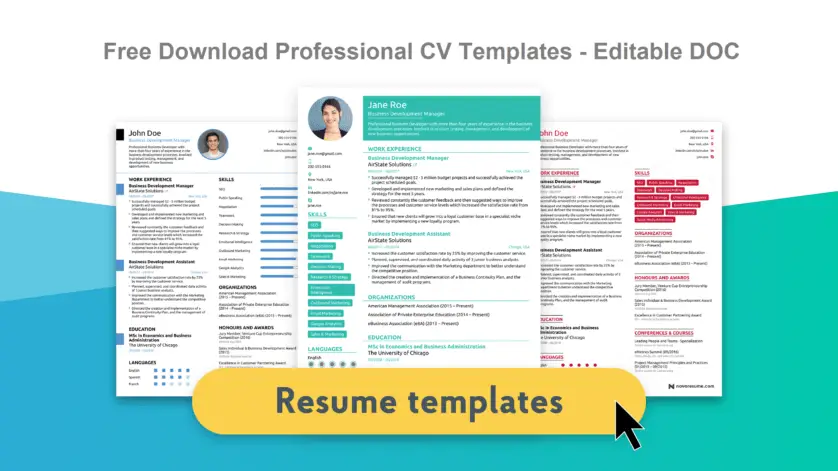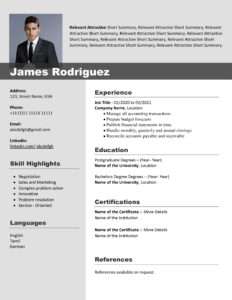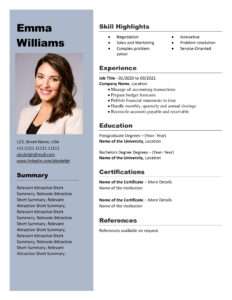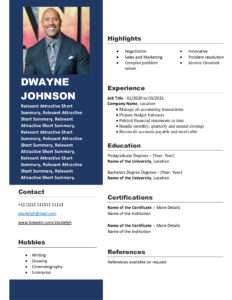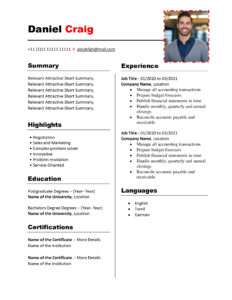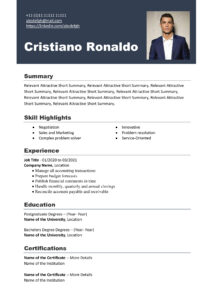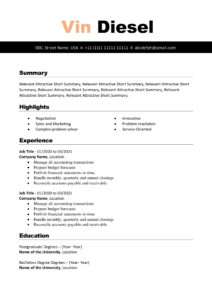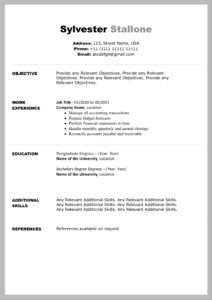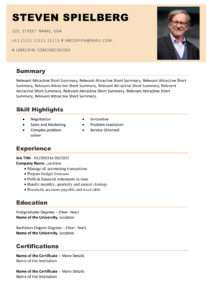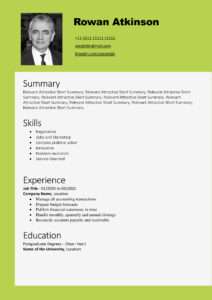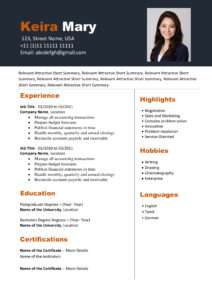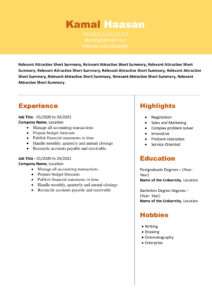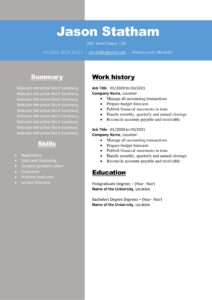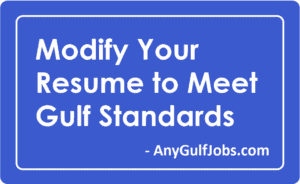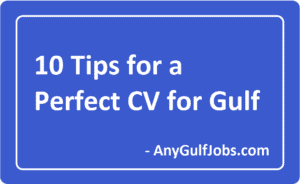Professional CV Template Word Free Download – Here you can Free Download Professional CV Templates – MS Word DOC | Resume | CV
Free Download Professional CV Templates – Editable DOC
When it comes to applying for jobs, your CV is everything. It’s the first chance you have to make a good impression, and if it’s not up to scratch, you could be missing out on some great opportunities. That’s why it’s important to make sure your CV is looking its best. And with our collection of professional CV templates, you can do just that.
Our CV templates are designed by experienced professionals, so you can be sure that they’ll impress potential employers. And they’re available for free download, so you don’t have to spend a fortune on getting your CV looking its best. So why not take a look at our selection of CV templates today? You could find the perfect one for you and land the job you’ve always wanted.
Things to understand before structuring your CV
Your CV is one of the most important tools you have when searching for a job. It is your chance to make a good first impression and convince potential employers that you are the right person for the job. However, crafting an effective CV can be challenging. Here are some tips to help you get started:
- Start with a strong personal statement. This is your opportunity to sell yourself, so make sure to focus on your strengths and accomplishments.
- Use clear and concise language throughout. Avoid jargon and long, convoluted sentences.
- Organize your CV in a logical way. Start with your contact information, then move on to your education and work experience. If you have relevant skills or awards, you can include them as well.
- Tailor your CV to each job you apply for. Make sure to highlight the skills and experience that are most relevant to the position you’re interested in.
- Proofread your CV carefully before sending it off. Check for any spelling or grammatical errors, and make sure that all of your information is up-to-date.
Following these tips will help ensure that your CV makes a positive impression on potential employers. With a little effort, you’ll be well
Top tips to structure your CV
Your CV is your first opportunity to make a good impression on a potential employer, so it’s important to get it right. Here are some tips on how to structure your CV:
- Start with your name and contact details. Include your name, address, phone number and email address.
- Next, list your qualifications. Include any degrees, diplomas or professional qualifications you have.
- Then, add a section on your work experience. List any relevant jobs you’ve had, starting with the most recent. Include the dates you worked, your job title and a brief description of your duties.
- Finally, add any other relevant information. This could include voluntary work, hobbies and interests or language skills.
By following these tips, you can be sure that your CV will make a good impression and increase your chances of landing the job you want.
Free Download Professional CV Templates – Editable DOC
▲ View / Download Editable DOC ▲
▲ View / Download Editable DOC ▲
▲ View / Download Editable DOC ▲
▲ View / Download Editable DOC ▲
▲ View / Download Editable DOC ▲
▲ View / Download Editable DOC ▲
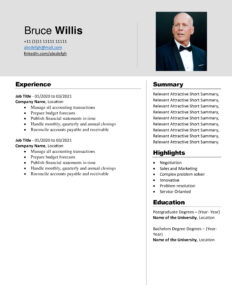
▲ View / Download Editable DOC ▲
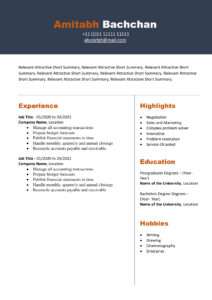
▲ View / Download Editable DOC ▲
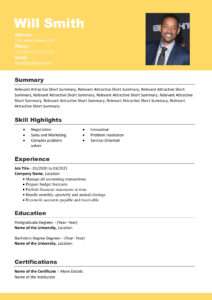
▲ View / Download Editable DOC ▲
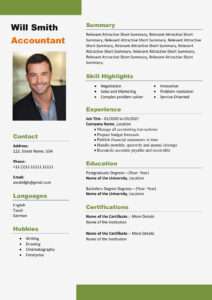
▲ View / Download Editable DOC ▲
▲ View / Download Editable DOC ▲
▲ View / Download Editable DOC ▲
▲ View / Download Editable DOC ▲
▲ View / Download Editable DOC ▲
▲ View / Download Editable DOC ▲
▲ View / Download Editable DOC ▲
▲ View / Download Editable DOC ▲
Learn more about CV / Resume
1. What is a CV / Resume
CV stands for curriculum vitae, which is Latin for “the course of my life.” A CV is a detailed document that describes your professional history, educational background, skills, and achievements. It is often used in academic settings, but can also be used to apply for jobs, internships, and fellowships.
CVs typically include information such as your name, contact information, education, work experience, research experience, publications, presentations, awards and honours, and skills. In addition, CVs can also include personal interests and hobbies, as well as references. While there is no one-size-fits-all format for a CV, there are certain elements that should be included in order to make sure it is clear and concise.
2. How Long Should a CV Be? and What is the Ideal CV Page Length
When it comes to writing a CV, the general rule of thumb is that the shorter, the better. After all, you want to give hiring managers a clear and concise snapshot of your experience and skills. However, there are exceptions to this rule. If you have a wealth of experience in your field, or if you’re applying for an executive-level position, then a longer CV may be appropriate. In these cases, aim for two to three pages. Otherwise, stick to one page.
Keep in mind that your CV should be tailored to the specific job you’re applying for. Don’t include irrelevant information or try to stuff too much onto one page. The goal is to give hiring managers a clear sense of who you are and what you can do. With that in mind, take the time to craft a CV that’s both informative and concise.
3. What to include in a CV
When it comes to job hunting, your CV is your first impression. Make sure you put your best foot forward by following these tips:
1. Start with a strong opening statement. This could be a brief overview of your qualifications and experience.
2. Organize your CV in a logical way. Use headings and subheadings to break up the text and make it easy to scan.
3. Tailor your CV to each job you apply for. Highlight the skills and experience that are most relevant to the role you’re interested in.
4. Use action words to describe your accomplishments. For example, “developed,” “achieved,” or “created.”
5. Avoid using pronouns like “I” or “me.” Instead, focus on showing what you can do for the employer.
6. Keep it concise. Aim for a CV that’s two to three pages at most.
Anything longer risks sounding overly detailed and may lose the reader’s attention.
7 Proofread your CV carefully before sending it off. Typos and other errors can make you look
4. What you should not include in a CV
There are a few things to avoid when creating your CV, as these can ultimately lead to your CV being rejected by potential employers. Firstly, avoid using clichéd phrases such as “hard worker” or “team player”. These are overused and do not add anything new or interesting to your CV. Secondly, do not lie or exaggerate about your skills or experience. This will likely be discovered during the interview process, and it will reflect poorly on you. Finally, try to avoid using overly technical language that may not be understood by everyone. Use clear and concise language that can be easily understood by everyone. By avoiding these things, you can ensure that your CV will be well-received by potential employers.
6. Gap on your CV and ways to fill the gap
If you have a gap in your CV, there are several ways to fill it. One option is to include a brief explanation of the gap in your CV itself. For example, if you took time off to raise a family, you could note that in the CV. Another option is to include other relevant information that will help to fill the gap. For example, if you took time off to travel, you could include information about the countries you visited and what you did there. If you took time off to care for a sick family member, you could include information about the care you provided. Whatever option you choose, make sure to present the information in a positive light and focus on the skills and experiences you gained during the gap in your CV.
7. Attach a Cover Letter for your CV
Your CV cover letter is an opportunity to sell yourself to a potential employer. It should be brief and to the point, highlighting your most relevant skills and experience. The goal is to convince the employer that you are the best candidate for the job.
To Download Cover Letters – Click Here
While there is no one-size-fits-all approach to writing a CV cover letter, there are some general guidelines you can follow. Start by introducing yourself and explaining why you are interested in the position. Then, briefly describe your most relevant qualifications. Be sure to tailor your letter to each individual job, highlighting why you are the ideal candidate for that specific role. Finally, thank the employer for their time and consideration.
A well-written CV cover letter can give you a significant advantage over other candidates. By taking the time to craft a strong letter, you will demonstrate your commitment and ability to communicate effectively. With these tips in mind, you can put your best foot forward and increase your chances of landing that dream job.
Professional CV Template Word Free Download – Here you can Free Download Professional CV Templates – MS Word DOC | Resume | CV

